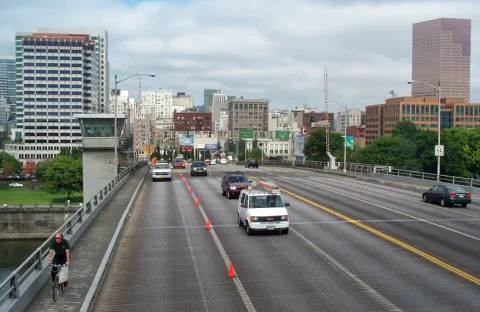
Minor Arterial Streets
Minor arterial streets are the lowest order arterial facility in the regional street network. They typically carry less traffic volume then principal and major arterials, but have a high degree of connectivity between communities. Access management may be implemented to preserve traffic capacity. Land uses along the corridor are a mixture of community and regional activities. Minor arterial streets provide major links in the regional road and bikeway networks; provide for truck mobility and transit corridors; and are significant links in the local pedestrian system.
Rural Arterial Roads
Rural arterial roads are the primary means of access into the County’s large rural districts, and often connect between counties to accommodate through movements. Rural arterials connect to freeways or highways, and link rural collector and local roads to the urban area and other regions. Rural arterial roads carry greater traffic volumes then rural collector roads, including commuters and other home-based trips, natural resource trips involving trucks, and recreational trips involving autos, bicycles and equestrians.
Major Collector Streets
Major collector streets serve several purposes including linking neighborhoods to the regional system of bicycle and automobile streets, and basic transit services. They typically provide direct access between residential and commercial developments, schools and parks and carry higher volumes of traffic then neighborhood streets. Major collector streets area also utilized to access industrial and employment areas and other locations with large truck and over-sized load volumes.
Neighborhood Collector
Neighborhood collector streets provide access primarily to residential land uses and link neighborhoods to higher order roads. They generally have higher traffic volumes than local streets.
Local Urban Streets and Rural Roads
Local streets provide access to abutting land uses on low traffic volume and low speed facilities. Their primary purpose is to serve local pedestrian, bicycle and automobile trips and limited public transportation use in urban areas; and auto and farm vehicle circulation with local pedestrian, bicycle and equestrian use in rural areas.
